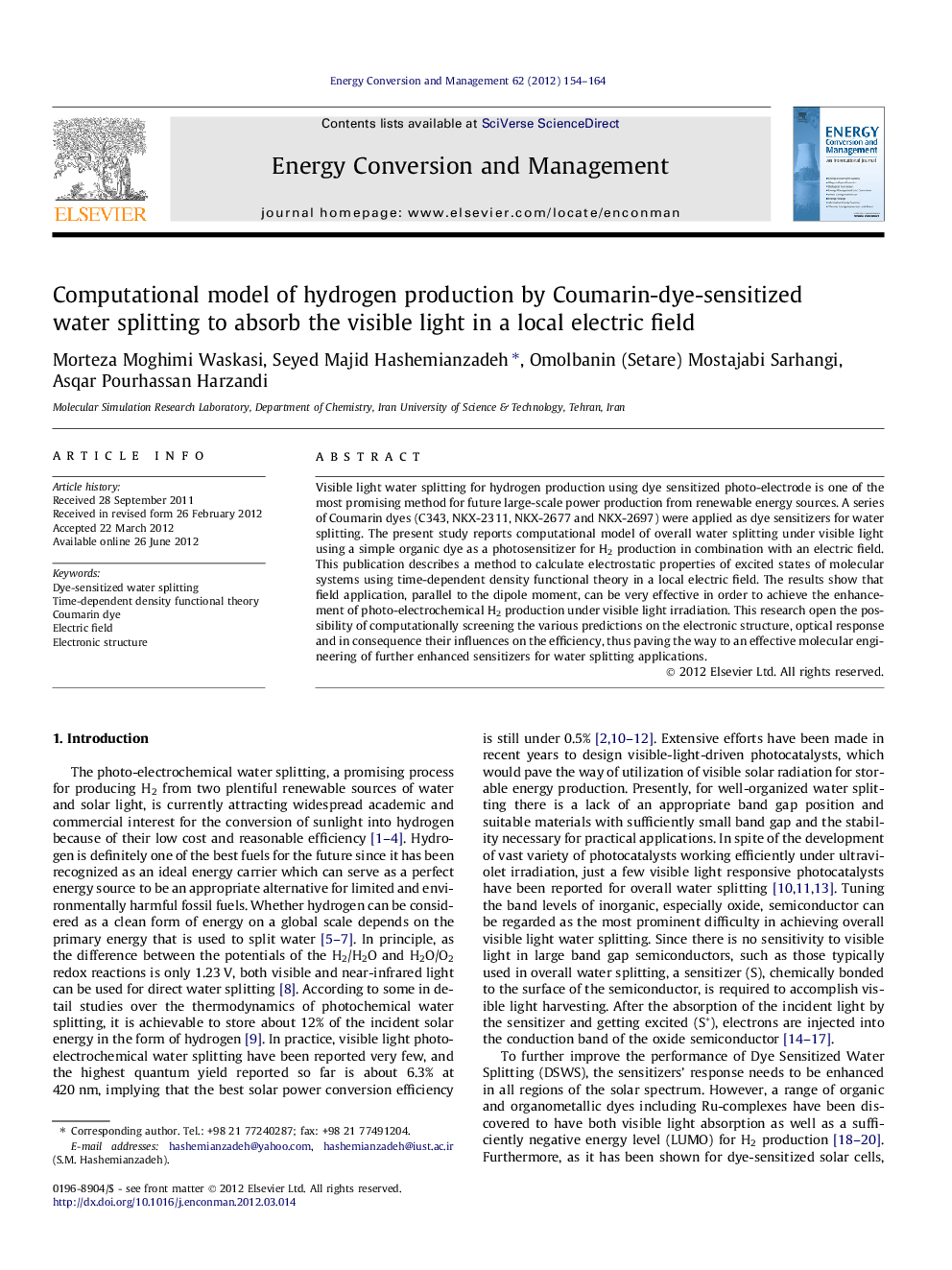| Article ID | Journal | Published Year | Pages | File Type |
|---|---|---|---|---|
| 761189 | Energy Conversion and Management | 2012 | 11 Pages |
Visible light water splitting for hydrogen production using dye sensitized photo-electrode is one of the most promising method for future large-scale power production from renewable energy sources. A series of Coumarin dyes (C343, NKX-2311, NKX-2677 and NKX-2697) were applied as dye sensitizers for water splitting. The present study reports computational model of overall water splitting under visible light using a simple organic dye as a photosensitizer for H2 production in combination with an electric field. This publication describes a method to calculate electrostatic properties of excited states of molecular systems using time-dependent density functional theory in a local electric field. The results show that field application, parallel to the dipole moment, can be very effective in order to achieve the enhancement of photo-electrochemical H2 production under visible light irradiation. This research open the possibility of computationally screening the various predictions on the electronic structure, optical response and in consequence their influences on the efficiency, thus paving the way to an effective molecular engineering of further enhanced sensitizers for water splitting applications.
► Electric field enhance Dye-Sensitized Water Splitting efficiency. ► The electric field parallel to the dipole moment of the dyes increase the efficiency. ► Peak Area method is more accurate and precise than the maximum absorption method.
